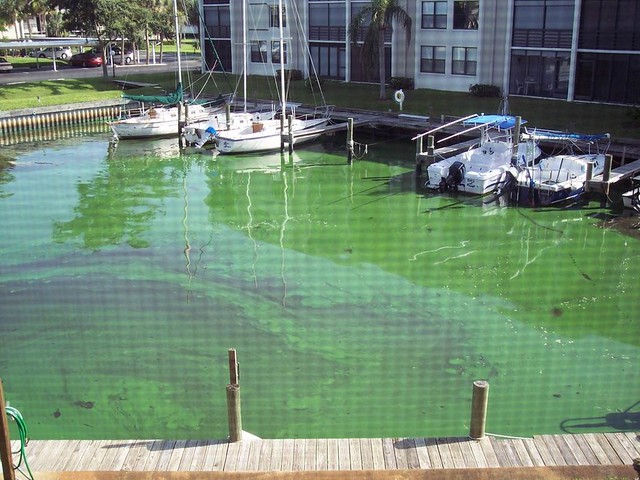
Photo courtesy of Florida Sea Grant.
Harmful algal blooms, including red tide and blue green algae, have become increasingly common along Florida’s shores. As scientists continue to study harmful algal blooms and use innovative tools to track them, it is important to provide the latest information to the public.
The PIE Center recently partnered with Florida Sea Grant as part of a grant project funded by the National Oceanic and Atmospheric Administration (NOAA) National Sea Grant College Program to provide outreach resources for harmful algal bloom awareness. This multi-faceted communication campaign included resources targeted towards both UF/IFAS Extension and tourists, covering a broad range of topics related to harmful algal blooms and their impact on Florida’s coastal communities.
“We developed a communication toolkit that included an issue guide, rack card, social media content and PowerPoint presentations that Extension agents can use in their own programs to educate communities about harmful algal blooms,” said Ashley McLeod-Morin, media coordinator for the PIE Center.
The communication materials were created in collaboration with harmful algal bloom experts to verify scientific accuracy and help frame messages to best reach the target audience. The PIE Center worked closely with Betty Staugler, an extension agent in Charlotte County, who provided information about harmful algal blooms.
“My role in this project was to collate the information and work with the PIE Center, who in turn created the outreach products,” Staugler said. “These educational products were developed based on stakeholder needs and NOAA NCCOS (National Centers for Coastal Ocean Science) harmful algal bloom science.”
The Extension-focused portion of the project includes two PowerPoint presentations, an issue guide and social media posts. The information geared towards Extension agents emphasizes the technology behind forecasting harmful algal blooms via satellite imaging. These resources were designed to be versatile for use in Extension programming around the state of Florida.
“This collection of materials can be used directly by extension agents in their own extension activities,” said Staugler. “For instance, they can give the created presentations or post the social media information directly. They can also share the printed rack cards and issue guide with interested stakeholders, such as coastal residents and businesses who may be impacted by a Karenia brevisred tide.”
Materials were also created to help hotels and other tourist locations provide information about harmful algal blooms to visitors. The resources geared towards tourists include an informational rack card and corresponding social media posts.
“An exciting component of this project was a rack card that we developed with tourists in mind,” said McLeod-Morin. “If someone visits Florida’s coastal areas during a harmful algal bloom event, we want to be able to provide useful information that helps visitors make informed decisions.”
A toolkit was created to compile all of the resources created in this project into a user-friendly guide. The toolkit explains the purpose of each component and recommends the best way to utilize the resources.
















